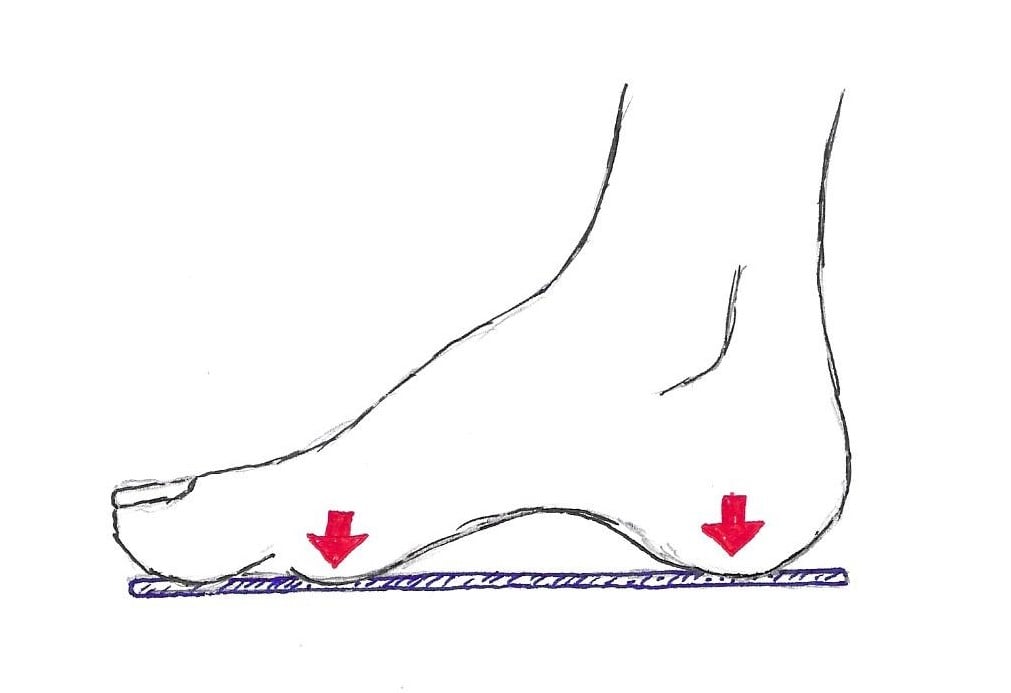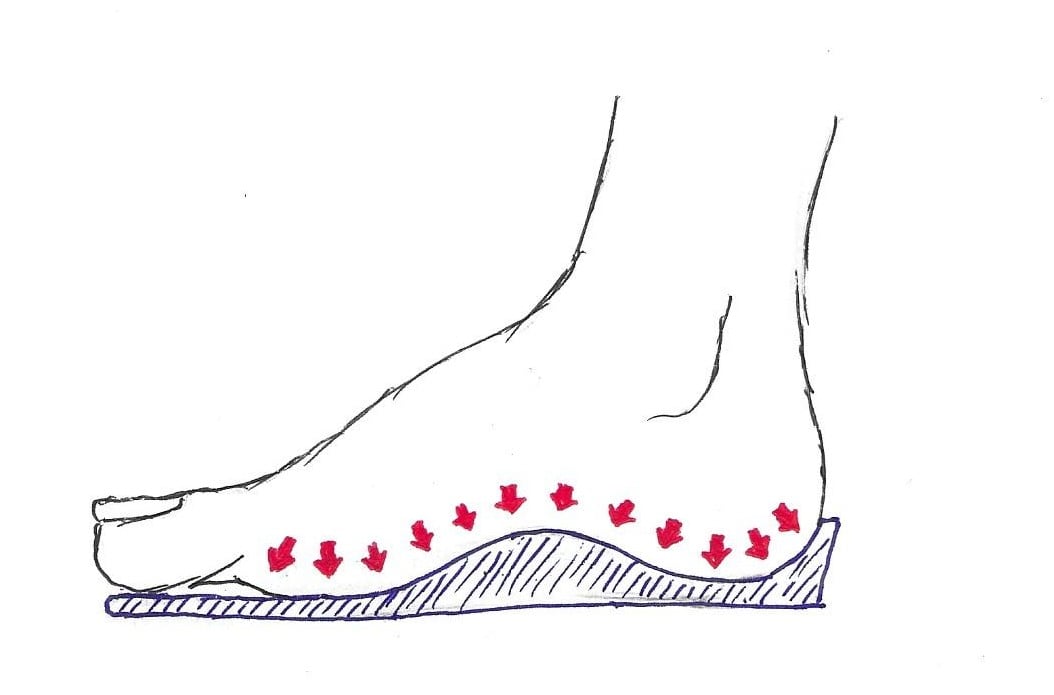When we are selecting the shoes that we want to buy, the most compelling factor is the appearance of the shoe. We look for contemporary style and colors that appeal to our eye. Unfortunately, we sometimes downplay the internal shape and contours of the shoe that have a major impact on how comfortable the shoe will be for us when we wear it.
The factory insole is typically one of the least expensive and least sophisticated parts of the shoe. In many types of shoes, the insole is simply a flat piece of foam that compresses and flattens within a few weeks of wearing the shoe. This results in high pressures where the material has flattened out from the pressures of our body weight under our heel and at the ball of our foot.

Another design is to use “memory foam” to allow the shoe insole to adapt to the shape of the foot. The problem with this concept is that as we step down onto the memory foam, it will compress under the pressure of our foot, but in a manner similar to traditional foam, it does not return to its original shape and thickness between steps. When the foam has reached its maximally compressed thickness, it can no longer absorb shock, and ultimately puts your foot health at risk as there is a lack of cushioning and support.
The flat insole or memory foam insole cannot adequately disperse pressure because it does not accurately match the natural shape of the foot. The right insole must integrate the natural contours of the foot in a frame that also promotes optimal alignment of the foot for the stresses of standing, walking, and sports activities.

It is not uncommon for people who have sought treatment for painful foot conditions such as shin splints, Achilles’ tendonitis, and plantar fasciitis to help manage the stresses that cause these problems by removing their factory shoe insert and substituting a custom insole known as an orthotic. These have been proven effective in managing these conditions, but custom orthotics can be expensive and may not be practical for all of the shoes that an individual wears.
Many years ago, a successful Australian podiatrist, Phil Vasyli, was able to use custom medical orthotic insoles to manage painful conditions and promote pain free activity for his patients. Dr. Vasyli had a large and successful business making these custom orthotics, but he also wanted to integrate these concepts into footwear. He began by developing a beach sandal that did a much better job of matching the shape of the foot than the traditional “flip-flop”. This design was quite successful and came to be known in many circles as “the plantar fasciitis flip-flop”.
The success of the beach sandal provided a foundation for the company to evolve and gradually became known as Vionic. The foot specialists and design teams at Vionic have created an expanded line of footwear for men and women that has integrated better alignment and support of the foot into fashionable contemporary styles. The Vionic insole design incorporates the key features of several different types of orthotics by providing an anatomical footbed that matches normal foot movement and anatomy and cradles the heel in a manner that keeps the foot and ankle centered. Each Vionic insole also is engineered to exactly match the internal contours of the shoe.
The integration of biomechanically engineered orthotic insoles into fashionable styles has created a worldwide legion of loyal Vionic customers. The popularity and success of Vionic footwear continues to drive the brand forward to meet the demand for day long comfort in attractive footwear.
About the Author:
Specializing in orthopedic and sports physical therapy, Brian Hoke, DPT, SCS, has a particular interest in the biomechanical factors influencing lower limb rehabilitation. He is the owner of Atlantic Physical Therapy, a private practice in Virginia Beach, VA.
Brian is a board-certified Clinical Specialist in Sports Physical Therapy, a distinction achieved by fewer than 600 physical therapists in the U.S. He works with athletes of all levels—from recreational runners to elite professional and Olympic athletes. He has contributed chapters to two textbooks on the treatment of running injuries.
Brian is an avid educator, lecturing extensively in the U.S. and internationally. Since 1985, he has been a faculty member of the popular continuing medical education seminar, “When the Feet Hit the Ground, Everything Changes.” He co-developed and has taught the “Take the Next Step” course since 1990. In addition, he has been an adjunct faculty member of physical therapy programs at Old Dominion University and Touro College on Long Island, NY.
Brian’s expertise in sports physical therapy is a particular asset to Vionic’s athletic line of footwear. He and Phillip Vasyli have also collaborated to create a foot orthotic designed for problems with supination—when feet roll outward too much.

Leave a Reply